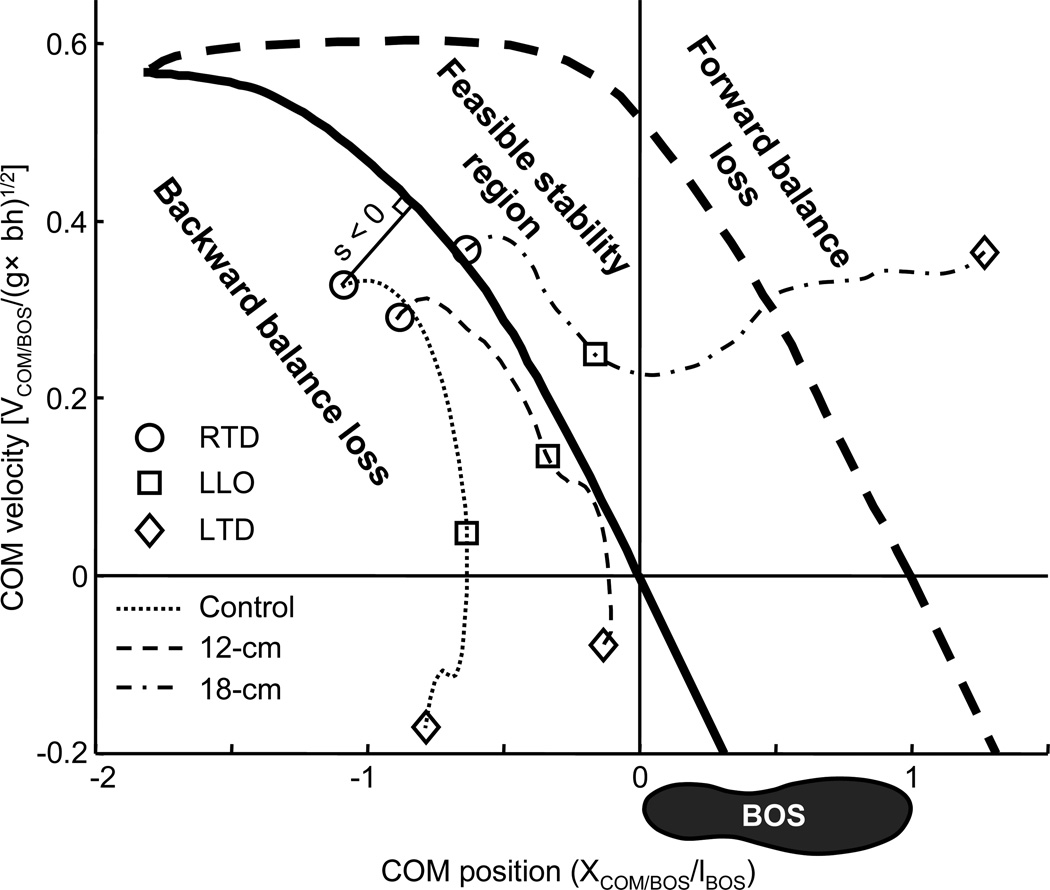Figure 2.
Schematic illustration of the stability measurement (s), in which representative trajectories from 12-cm (the dotted line), 18-cm (dash-dotted line), and control (dotted line) groups depict the center of mass (COM) motion state (i.e., the x-coordinates represents the COM anteroposterior position and the positive y-coordinates indicates its forward velocity) from right (slipping) foot touchdown (RTD, circle), through left (recovery) foot liftoff (LLO, square), to the instant of its touchdown (LTD, diamond) in the 150-cm slip test. The feasible stability region is enclosed by two boundaries: the limits of stability against backward balance loss (the thick solid line) and those against forward balance loss (the thick dashed line). When a COM motion state lies within the feasible stability region, balance loss is preventable. A motion state further below the lower boundary of the feasible stability region (i.e., a more negative value) is more unstable and a backward balance loss becomes inevitable because the initial forward momentum is insufficient to carry the COM forward to within the BOS. Conversely, when the motion state is further above the upper boundary (i.e. a more positive stability), a forward loss of balance becomes inevitable due to the excessive forward momentum. The thin solid line indicates the magnitude of the instantaneous COM stability, which was defined as the shortest distance from the given COM motion state at that instant to the limits of stability against backward balance loss. When the instantaneous COM motion state is below/above the limits, the stability value is negative/positive, respectively. Greater stability values indicate greater stability against backward balance loss (Pai, 2003). Position and velocity of the COM relative to the base of support (BOS) are dimensionless variables expressed as a fraction of lBOS and , respectively, where lBOS represents the foot length, g is gravitational acceleration, and bh the body height.

